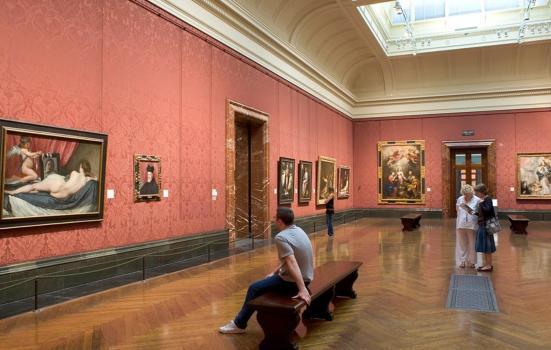Latest government figures show the value to the economy of museums and galleries has rebounded to near pre-pandemic levels.

Nathan Hughes Hamilton
The value of museums and galleries to the UK economy has hit its highest level since late 2019, signalling the sector's gradual recovery from the impact of pandemic restrictions, government figures show.
Statistics published by the Department for Digital, Culture, Media and Sport (DCMS) show that in June this year, museums and galleries contributed £73m to the economy – the highest value since December 2019, when they contributed £74m. The figure for June represents a 25.9% year-on-year rise from June 2021, when the sector generated £58m.
The figures also reveal that music, performing and visual arts were worth £945m in June this year, a 53.1% year-on-year rise. This figure remains below the peak for the last 12 months, which was recorded in November 2021, when the sector generated £958m.
READ MORE:
The figures indicate that the cultural sector is bouncing back well from the extreme impact of lockdowns and subsequent pandemic restrictions. Economic contributions from museums and galleries dropped as low as £34m in April and May 2020, while music, performing and visual contributed £302m in May 2020.
Overall, DCMS sectors are currently outperforming the wider economy, with an estimated growth of 0.7% from the last quarter of 2021/22 to the first quarter of 2022/23, a period during which the overall UK economy fell by 0.1%.
From February 2020, prior to the sector being impacted by the pandemic, to June this year there was growth of 5.3%, compared with 1% growth for the UK economy overall.
Weathering pandemic losses
The museum sector is still in the process of recovering from the pandemic, when many institutions lost huge amounts of revenue, despite receiving emergency financial support.
The Victoria and Albert Museum in London lost almost £53m in the first year of the pandemic, according to a report in the New York Times, while the Museums Association’s Redundancy Tracker showed that 4,824 staff members were laid off across the sector between March 2020 and March 2022.
A report published by Art Fund in May showed that although UK museums are on the road to recovery, a third remain concerned about their long-term survival, particularly among smaller and volunteer-run independent museums.
Although the sector is rebounding, figures showed that overall income levels remained 32% below pre-pandemic levels, while visitor numbers were 39% below pre-pandemic levels.
“The pandemic caused an existential crisis for the sector, and the emergency funding that saved many museums camouflaged an underlying financial fragility, with yearly cuts to staff and services meaning that many museums were already struggling to maintain buildings, retain expert staff and provide services for their communities,” the report stated.
Cost of living crisis
“Looking ahead, the cost-of-living crisis will be a huge challenge to museums’ operations, their staff and their audiences,” the Art Fund report said. “With emergency funding no longer available, the true impact of past cuts and future losses will be felt sharply and deeply.”
These concerns were borne out by a survey of public sentiment published last month by the Association of Leading Visitor Attractions (ALVA). It found that over 40% of the public feel “worse off” financially than last year.
While more than a third of those surveyed said that they plan to visit museums and galleries more often this autumn than they did in summer/autumn 2021, 12% said they expect to visit less often, predominantly citing the rising cost of living.




